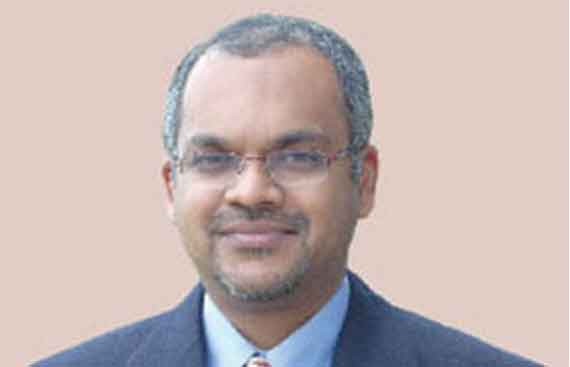Are We at Telemedicine Yet, Asks Srivatsan Krishnan

Bristol-Myers Squibb is a global biopharmaceutical company focused on discovering, developing and delivering innovative medicines for patients with serious diseases.
Leveraging of technology in the healthcare space isn’t a new phenomenon, is it?
Telemedicine, not a new concept, continues to evolve. New developments in technology as well as improvements in Internet access and telecommunications have made telemedicine incredibly relevant today.
Let us briefly examine some fundamental reasons as to why it is imperative for societies to maximize the benefits of telemedicine. The list below is not meant to be all inclusive.
Shortage of physicians – In general, in most parts of the world, there aren’t nearly enough physicians to provide the right level of medical services to populations. More specifically, primary care physicians are in short supply in most regions around the world. A country like India has less than 1 doctor per 1000 people. This usually means that the available pool of doctors, especially specialists, is unable to provide the requisite coverage. Not to forget the fact about uneven distribution of specialists in various regions; some may have a shortage while others may even have a surplus.
Demographics and geography - As people live longer; access to adequate and timely healthcare can be an issue for populations living in rural or even secondary/tertiary cities. In many cases, for various reasons, this segment of the population may be limited in their ability to travel to the nearest medical care facility.
Costs – Cost of delivery of healthcare services, especially for chronic care, continues to grow all over the world considering that our planet is home to more people than ever before. Public spending on healthcare in the US is approximately 8 percent of GDP. Flip side of this coin, in India which is home to 1 in every 6 human beings, public spending on healthcare is approximately 1 percent of GDP, potentially, not addressing medical needs for a majority of its population.
" With technologies today such as wearable devices, the ability to continuously monitor patients remotely is another significant advantage"
Telemedicine helps address many of these issues
With Electronic Health Records and clinical decision support systems becoming more popular and ubiquitous, there are tools and technologies available now to address the need for data capture and management. In theory, a doctor sitting in their home office could be reviewing health records of a patient half way across the world while exchanging notes with a colleague in a virtual setting. For more complicated cases requiring a team of experts, these types of technologies can help pull together medical experts in location-agnostic fashion. Specialities such as radiology for example, continue to push the frontiers when it comes to collaborative medical practices enabled by technology.
Telemedicine, today, can put patients in touch with a qualified medical practitioner for treatment of common ailments such as colds and fevers. 365 days a year, 24 hours a day. This helps limit the visits to doctors and hospitals for the really critical needs. When it comes to addressing cost of healthcare, this option helps maximize the use of scarce resources from an economics standpoint.
From a lean systems perspective, this is a good option to maximize the use of healthcare expertise by connecting patients to doctors who may be available. This also helps reduce the time spent by patients waiting to 'talk' to a physician. Timely access can be enabled via email or web conferencing type technologies, a winwin for both patients as well as healthcare service providers.
With technologies today such as wearable devices, the ability to continuously monitor patients remotely is another significant advantage, thereby helping limit the number of inpatient visits. When appropriate, combining these way of helping provide services without having to make the customary hospital visits. with tele appointments facilitated by care givers is another way of helping provide services without having to make the customary hospital visits.
Prevention is the best cure and this is another area where wearable devices can help to continuously gather data about well being. Devices such as those used for measurement of blood pressure and glucose levels can transmit data directly to a physician’s desk, virtually at any time, allowing doctors to monitor their patients’ data remotely.
Patient compliance, a necessary and very vital cog in the wheel of patient healthcare, can be monitored on an ongoing basis so that any necessary course corrections can be made. The other side of the compliance coin is patient engagement. Patients now have the option to learn about their treatments and their roles in these treatments at their own pace using videos and other materials on their personal mobile devices.
Developments in virtual reality and haptics make applications such as telesurgery even more feasible. Throw in artificial intelligence into this mix, and the prospects for personalized care grows manifold, helping push the needle toward improving outcomes for patients. A scenario where an individual’s vital signs measurements indicate abnormalities, are used to call the nearest emergency medical center using GPS, is within the realm of today’s reality.
While the full impact of developments in telemedicine are yet to be fully realized at a scale benefitting large populations, the potential is clearly there. Aspects of regulations, payer-payee models as well as patient education will need to continue to evolve along with the technology in order to drive better patient outcomes.
So, is this proverbial glass full, half full or half empty? At this time, none of this eliminates the need for in-person treatment for emergency situations. Clearly, we are not yet in a situation where a patient can be virtually transported to a medical care giver’s office, but telemedicine definitely helps nudge this type of thinking further along.
